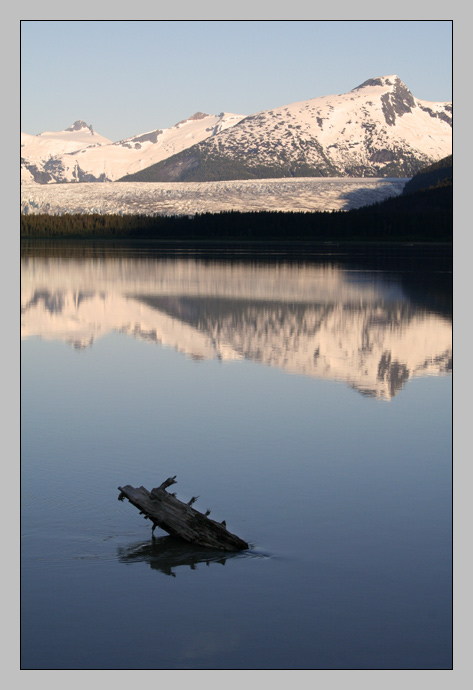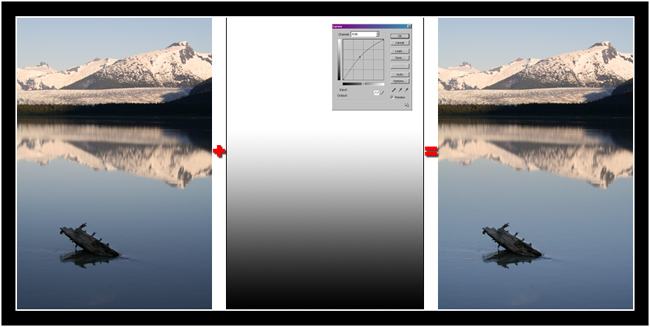
The day my Canon XT was scheduled to arrive was the day we planned to leave for a 3-day weekend up Taku River. UPS opted not to leave the package at our door that afternoon, so our only recourse was to try to pick it up sometime after the truck returned to the warehouse. I managed to get my hands on it with barely an hour left before we had to leave. The XT’s proprietary batteries were the same ones used in the Canon s-series, so I borrowed a charger from a friend who owned an s70 just so I could begin charging all three batteries. Within 45 minutes I had at least a partial charge on each. I had no idea if they’d last through the weekend and the cabin we were going to had no electricity.
That weekend, I mostly shot on auto as I learned how to use the new camera. Two of the days were grey and overcast, but Saturday was beautiful. I woke up at 5:30am for some reason, and looked out the window. The sun was just rising over the mountains behind the cabin, and only a few wisps of clouds painted the sky. The air was still and the river was so flat that the reflections in it were almost mirror quality. I crept downstairs and out the door, hoping that I could catch a few “golden hour” photos.
While everyone else slept, I stood on the banks of the Taku and experimented with my new camera’s settings. I also peed behind a tree.
Often, when I’m looking through my photos, I pass by pictures like this with barely a second thought. I think it’s because landscapes like this are common where I live (at least when it’s not raining), and I don’t appreciate them as much as the exotic (to me) landscapes I see while on vacation. I’m thinking about my reaction to the HAVO Lights picture I posted last week. Do I enjoy that photo because it’s a good photo, or do my memories of the evening tint my appreciation of it? The opposite may be true here. Does this picture capture something special or is it just another blasé Southeast Alaska composition? I don’t know if I can trust own opinion.
Who cares? I can enjoy this picture for its instructional merits. This was one of the first photos I took that pushed the XT’s exposure latitude to its extremes. I like that the snow on the mountains maintains almost all of its color information, while the deep dark tree line just barely has any detail left. In the original, the log jutting from the river was inky, too, but in my Photoshop experimentations, I decided to apply a curves-based gradient from the bottom edge of the image to the shoreline. In effect, this lightened the lower half of the image — pulling out some detail in that log — without overexposing the snowy highlights above.
I also applied warming filter (85) after the fact. It added just a hint of color that I (romantically, perhaps) think was there at sunrise, anyway. Besides, with the exception of the sunlit trees on the left, the domination of blue and whites made for a chilly photograph. It seemed an injustice to such a warm, Memorial Day weekend.
Oh, and those batteries? I shouldn’t have worried. Since the XT is an SLR, it hardly uses any juice. Compared to the point-and-shoot s30, which uses its LCD screen for practically everything, it seems like I hardly ever have to recharge.
Canon Digital Rebel XT
Date: 28 May 2005; 5:31am
Focal Length: 55mm
Shutter: 1/400 second
Aperture: F/14
ISO: 400
Photoshop: Applied Warming Filter #85, brightened lower half of image.
Click “more” for a comparison of the final image to the original.
Here’s a graphic that should give you a rough idea how the curves-based gradient was done. I used a New Adjustment Layer so that the background layer wouldn’t change.

If you can’t make out the difference in that image, here’s a split screen view (with the warming filter difference, too):


You must be logged in to post a comment.